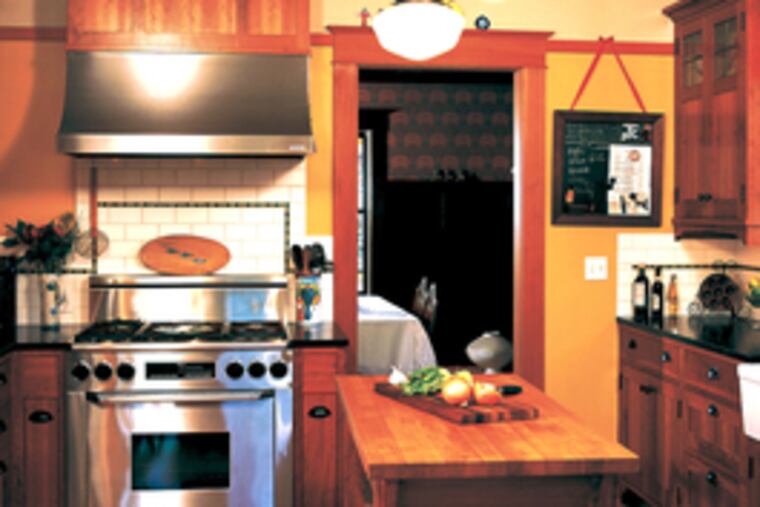Get the bungalow-down on modernizing these classic kitchens
Bungalows are warm, cozy, comforting and inviting, so it's no surprise that every generation over the last century has continued to rediscover the style.

Bungalows are warm, cozy, comforting and inviting, so it's no surprise that every generation over the last century has continued to rediscover the style.
The name bungalow is derived from the word bangala, referring to the indigenous British colonial houses of the Bengal region of India. These one-story houses either sat right on the ground or were suspended on wooden poles to protect the structure from animals and floods.
Bungalows are characterized by many windows, deep overhangs, dark woods and rooms open to one another. Modern versions, built between 1900 and 1940, almost always kept the wonderful deep front porches that sometimes worked as extra rooms. The woodworking was uniquely expressed in window trims, ceiling moldings and baseboards, built-in china cabinets, doors, window seats and built-in bookcases.
Today anyone hoping to refurbish one of these older homes must struggle with how to blend modern appliances and conveniences into a home originally designed for a wood stove. The original bungalow kitchen was designed as an austere, purely functional room relegated to the back of the house and cut off by a door.
A good place to look for detailed information about this process is "The New Bungalow Kitchen," a new book by architect Peter LaBau (The Taunton Press). This book outlines the historical roots of the Arts and Crafts movement, reviews typical floor plans and even includes photos or sketches of original kitchens.
Simplicity and functionality are revealed to be at the heart of the movement. This means combining such elements as warm wood and practical function that still appeal to the modern homeowner. In evaluating homes from Pasadena to Maine and from Seattle to Memphis, LaBau guides the reader in a step-by-step way.
He explains that brand-new appliances are actually quite workable in these old-fashioned kitchens. Numerous small appliances, such as 30-inch-wide by 24-inch-deep refrigerators, would do the job. Other possibilities are dishwasher drawers that are small and easily placed for increased function, and freezer drawers and 24-inch-wide pro-style ranges.
The 30-inch-wide range shown in the photograph here sits up on little legs reminiscent of those of a wood-burning stove or a 1930s Magic Chef range. In this 1913 bungalow kitchen, the modern farmhouse sink is a perfect choice.
So-called subway tile provides a perfect tie back to the period. Wood-tone cabinetry honors the very heart of the Arts and Crafts-style. One addition to this kitchen that reflects its contemporary functionality is the narrow butcher-block island, appropriately sized for a smallish kitchen.
The book gives tips on features such as swivel-joint faucets, counter surfaces and other types of tile selections.
The book makes for fun reading because the author also illustrates how lighting progressed through the 1920s and 1930s and explains why the ceiling-mounted fixture is a perfect choice for a bungalow-style kitchen today. He also covers other details, such as bead board, doors, muntins in windows, stained glass and sinks, shown in the book with some of the original advertisements. *
Christine Brun, ASID, is a San Diego-based interior designer and the author of "Big Ideas for Small Spaces." Send questions and comments to her by e-mail at cbaintdes@hotmail.com.